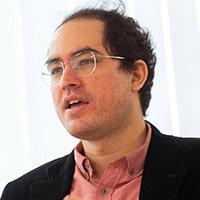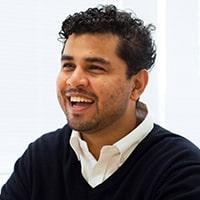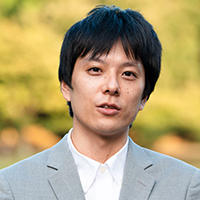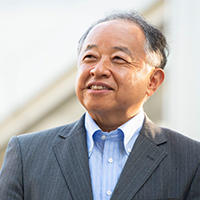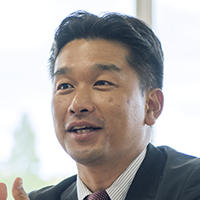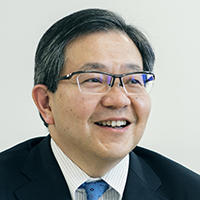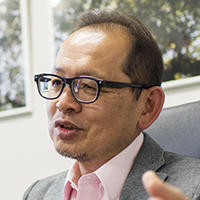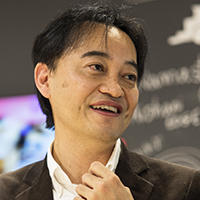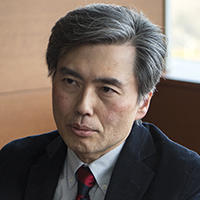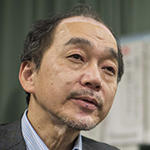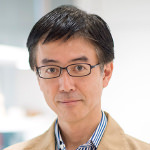SDM Voice|Prof. Tomohiko TANIGUCHI
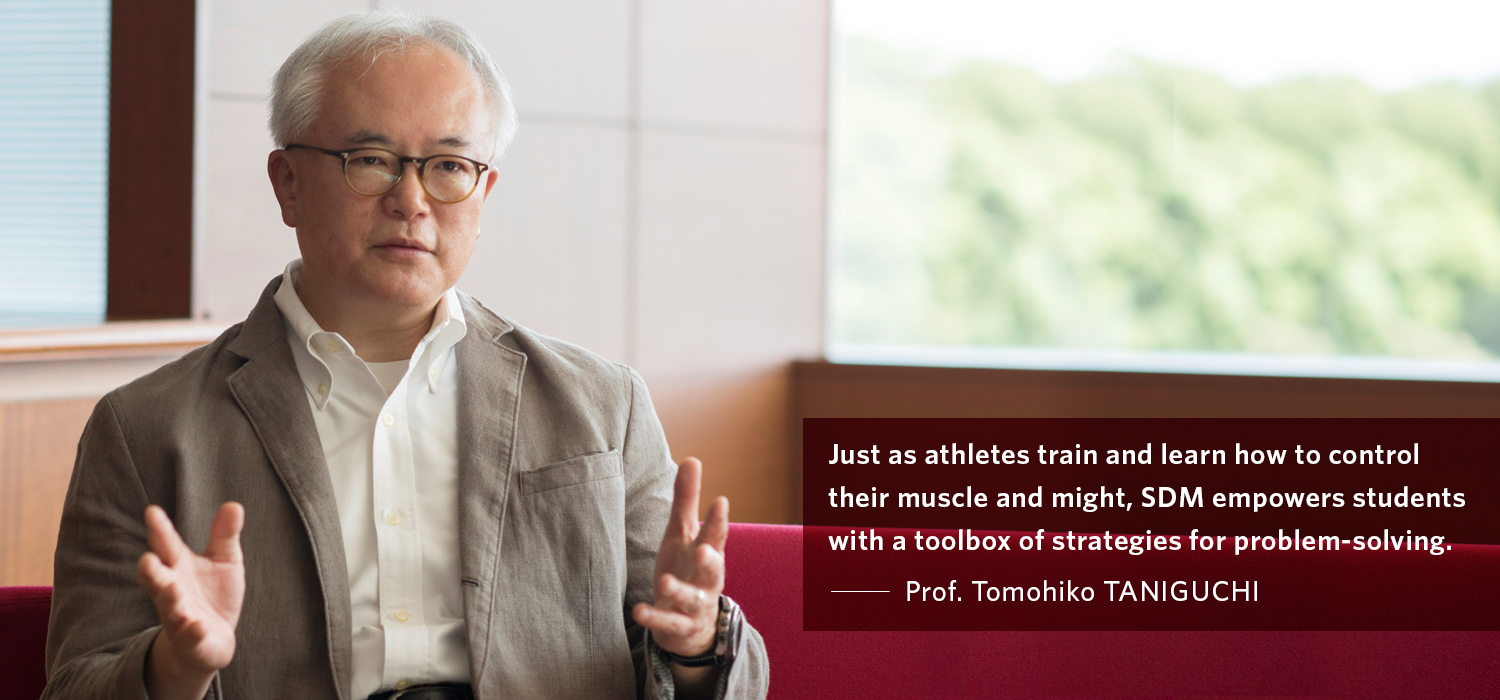
Professor Tomohiko TANIGUCHI leads the laboratory for international political economy and is a prominent lecturer in the field. He currently holds the position of Special Adviser to the Cabinet of Prime Minister Shinzo Abe at the Prime Minister's Office (PMO), where he is responsible for Japan’s international strategic communications. For our inaugural SDM Voice interview, we sat down with Prof. Taniguchi to see what makes SDM unique and what kind of students it attracts.
Profile
Prof. Tomohiko TANIGUCHI
Professor, Graduate School of System Design and Management (SDM) at Keio University since April 2014, after serving as a Guest Professor for six years.
Prof. Taniguchi served as Councillor to the Cabinet Secretariat under Shinzo Abe before joining the tenured faculty of SDM. Then and now, it is widely reported he has been writing some of Abe's important foreign policy speeches, which he has neither admitted nor denied himself. Taniguchi spent 20 years in business journalism before joining the Ministry of Foreign Affairs (MoFA) as Deputy Press Secretary/Deputy Director General for Public Diplomacy in 2005. While in journalism Fulbright scholarship brought him to Princeton University, New Jersey, the U.S. He spent three years in London, the U.K. as a foreign correspondent, during which Foreign Press Association in London elected him President, their first "from the east of Suez." Taniguchi also spent sabbaticals as a journalist both at a think tank in Shanghai, China, and at Brookings Institution, Washington, D.C., before joining the MoFA. Author of many books on international relations, he appears live frequently on news shows of BBC, Al Jazeera English, CNN and the like.
Defining SDM
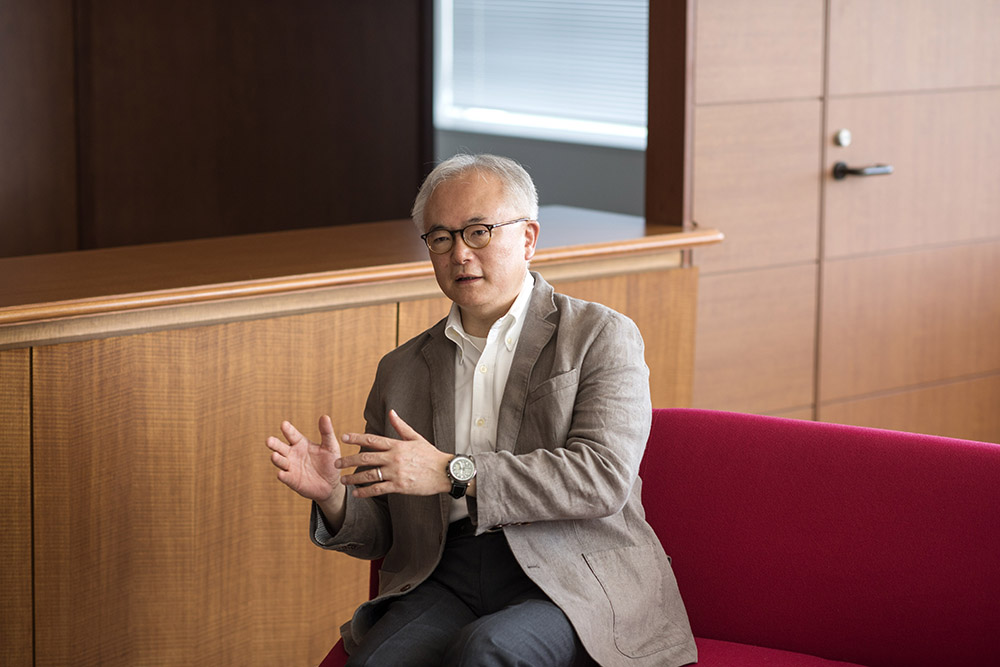
Here at SDM, I give lectures in both English and Japanese on the topic of international political economy and serve as a thesis adviser to master's students. In my "lab," we read meticulously through Japan's postwar history using a variety of books and articles.
A wide range of students, some fifty years apart in age, come to study in my lab. Even individuals with no relation at all to SDM come and actively contribute to our research. After all, we live in a time of "open innovation." This free academic environment that SDM provides has to be one of its best assets. Students conduct surprisingly insightful readings and interpretations of the text, which is encouraging for me to see, especially because these readings lead them to earn no credit whatsoever. They simply love what they do with the help of a healthy dose of peer pressure.
Many universities and graduate schools continue to isolate themselves within their own established fields without much interplay between faculties and departments. SDM is the exact opposite--it is, very literally, an interdisciplinary school.
The discipline of systems engineering calls the United States home, where designs for large systems gained salience in the post war era. Over time, systems engineering and systems approach earned preeminence as knowledge with which one could either design something new, or solve complex challenges, better than otherwise. SDM is unique as the only school in Japan to teach this methodology.
The toolkit obtainable here could be applied to a wide range of systems, from purely technological ones like satellites to social structures. In the pension system, in education, and even in national security and foreign policy, many elements integrate organically with one another, forming different kinds of systems in that their functions contribute to a particular end.
Therefore, SDM must tackle an incredibly diverse variety of issues, which makes it challenging to define just what SDM is. But I find this inexplicable nature fascinating. It's something for us to be proud of. The students who perform best at SDM are those who find fun and joy in learning the discipline and its applicability that is almost unlimited.
Just about all of the institutions around the world are products of our past, it is the inescapable fate that the things we will create in the future will inevitably be compared and contrasted with something that already exists. At SDM, I urge my students to always take history into account. Our reading of Japan's postwar history is rooted in this thought.
Academics Connected with Society
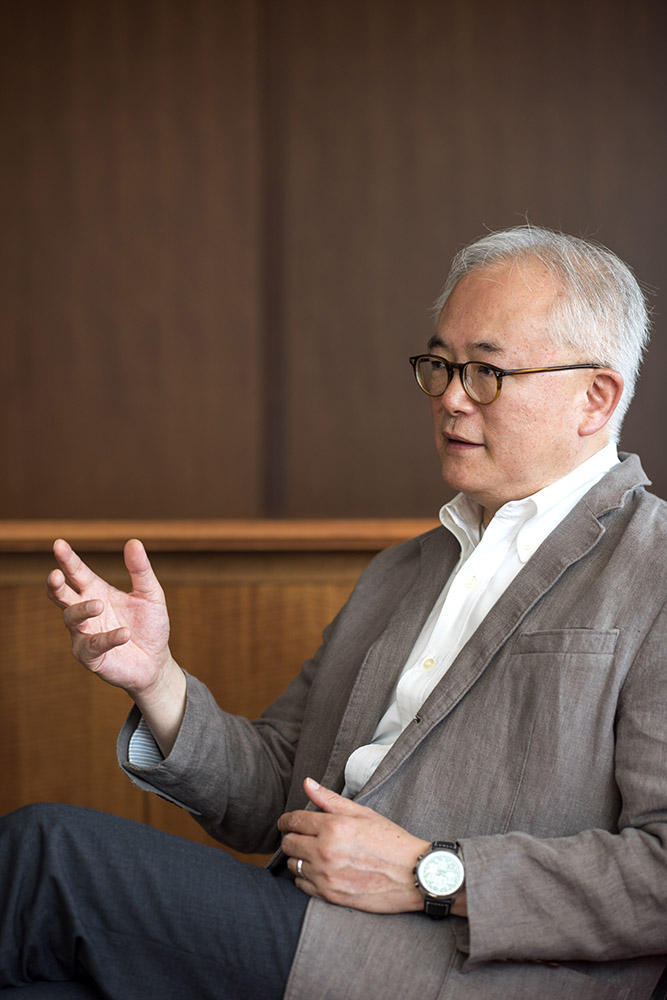 The university was once called a kōdan, the Japanese word for ivory tower, that is detached from the reality on the ground. kōdan academism conjures up a dignified and authoritative place pretty much aloof from the rest of the world.
The university was once called a kōdan, the Japanese word for ivory tower, that is detached from the reality on the ground. kōdan academism conjures up a dignified and authoritative place pretty much aloof from the rest of the world.
It isn't that detachment is necessarily bad in and of itself. If you want to learn ancient Greek, you have to single-mindedly immerse yourself in learning while still young. Only then can you stand at the gateway to philosophy.
Once inside, you will find yourself standing right in front of the edifice of human knowledge. The discipline of philosophy can only progress when a bold young mind unflinchingly moves forward into the past.
But the issues that SDM faces belong to the future--notions that are just taking shape, problems that are waiting to be solved. We don't make breakthroughs here by grappling with tomes of text. Our discipline is one of jitsugaku, or applied knowledge, something FUKUZAWA Yukichi, Keio's founder, dedicated his life-long learning for, which bears value only when applied to the real world. This is why it is essential that we at the SDM community interact with society as a whole.
Little wonder, a majority of the faculty at SDM has come from careers of real-life business experience. I myself currently have an office at the PMO, where I serve as a special advisor to Prime Minister Abe's Cabinet, and travel back and forth almost every day between the office and SDM on this beautiful Hiyoshi campus.
What We Look For in Students
Many of our returning, that is to say, working adult students enter SDM already with questions to explore. With a bit of guidance, they could connect possible solutions with systems approach. On the other hand, many other SDM-ers are fresh out of college, so it's an interesting mix. Returning students often feel that their areas of interest are too narrowly defined, whereas students fresh out of college tend not to be able to narrow down their interests. Therein comes the value of mutual stimulation, which you see aplenty in SDM.
I for one wish them to be propelling themselves forward, with or without tutorial guidance. Be assured, though, even if you don't know what to be looked into, for SDM makes it compulsory for all the students to get engaged in what we call Design Project, which is about the old adage, "Two heads are better than one." Brainstorming together gives students access to diverse ways of thinking, which can be a shortcut to a solution. Design thinking is a group activity that heightens participants' awareness of the issues.
Who will be best fit to SDM? I'd say someone who leads the pack, shall we say, who never shuts up but speaks out even before they have thought through the question. Again, for those shy, rest assured that the D-Pro could well give them a new window through which they discover their new selves.
Our Ideal Alumni
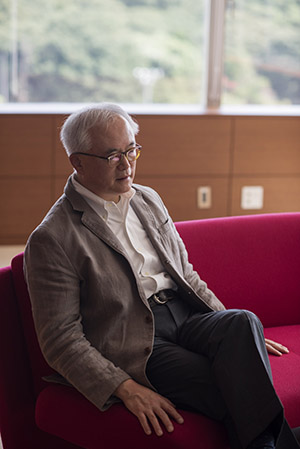 Once upon a time, at the center of Japanese post-war industrialization, there was a bank, called IBJ, which was both a nerve and a command center. It had a legendary banker, Sohei NAKAYAMA, who would always say whenever the country faced serious challenges, that whatever problem, it comes with a mission, one that is only to be solved.
Once upon a time, at the center of Japanese post-war industrialization, there was a bank, called IBJ, which was both a nerve and a command center. It had a legendary banker, Sohei NAKAYAMA, who would always say whenever the country faced serious challenges, that whatever problem, it comes with a mission, one that is only to be solved.
Put differently, one must not be discouraged but rather encouraged by the seriousness of the challenges at hand. With that forthcoming attitude, the very attitude we wish to foster among SDM-ers, one gets more motivated to face up to the problem squarely, to take a variety of views into consideration, and to be open for whatever solutions, however out-of-the-box they may be. Would you not like to work with such an individual, who you can say is of true leadership?
Training Problem-Solving Athletes
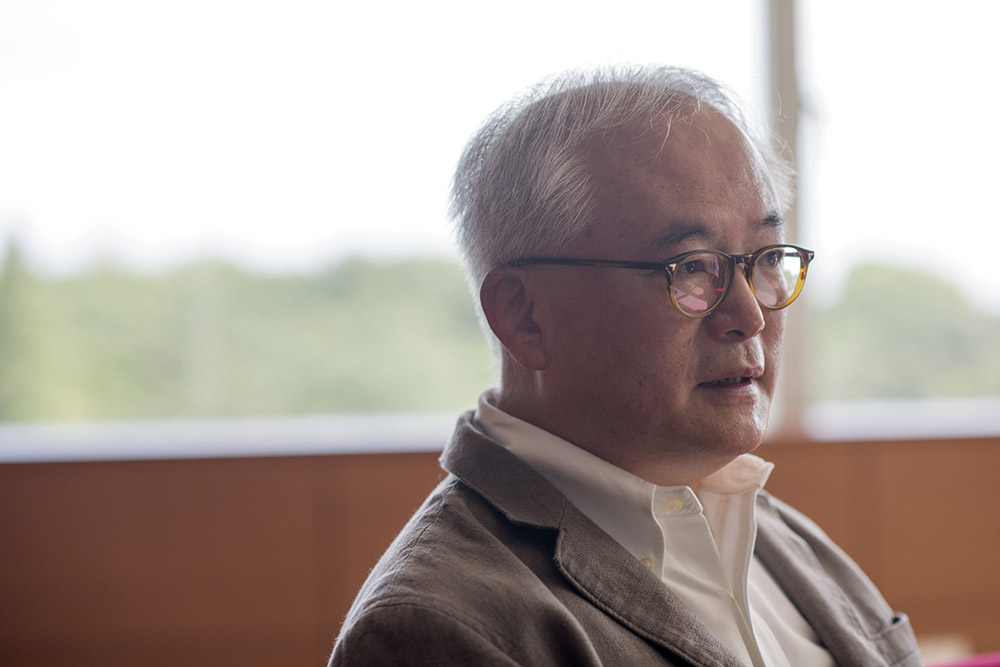
In sum, you could call SDM akin to a gym that trains athletes. Athletes, in this sense, are the ones open to whatever kind of solutions, and flexible to address the question from a variety of different angles. If you think about it, to become an athlete, you must first learn which muscles to use and how, and then start to work out accordingly. You train every day, and of course in the end you must win. It is no exaggeration to say that is what SDM and SDM-ers do each passing day.
Our "athletes" have ranged from young officers from the Japanese Self-Defense Forces, some of whom were top achievers, to those with major auto companies engaged in cutting-edge technological development projects. I would also like to see more female members among SDM-ers. The number is on the rise. But it has still way to go. The more diversity, the better.

